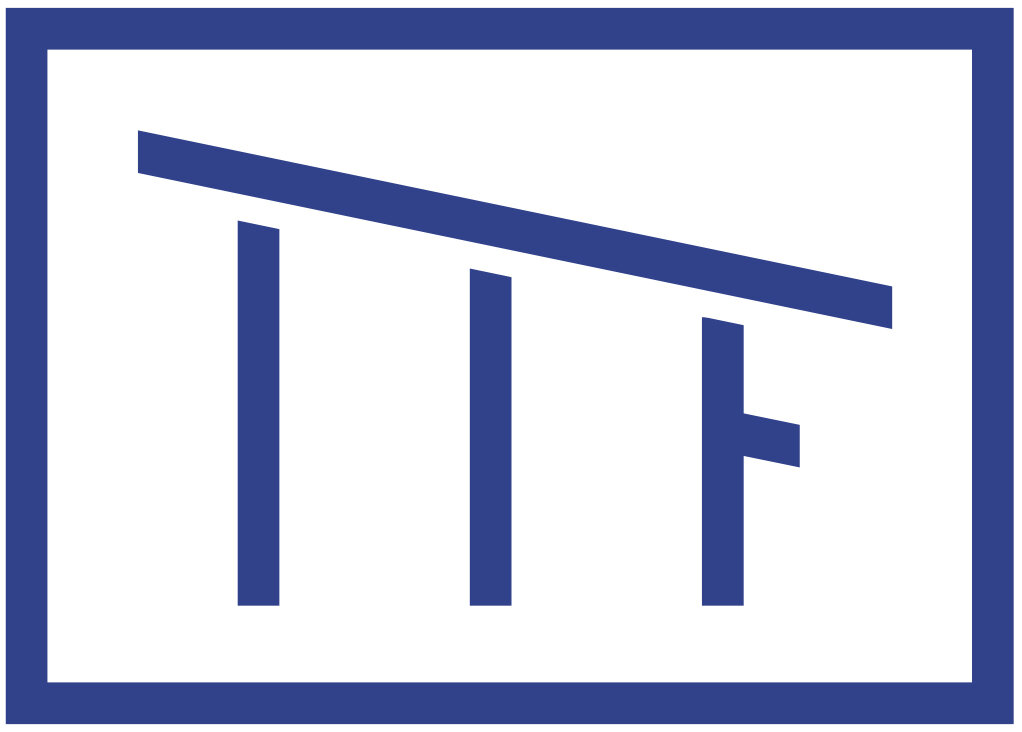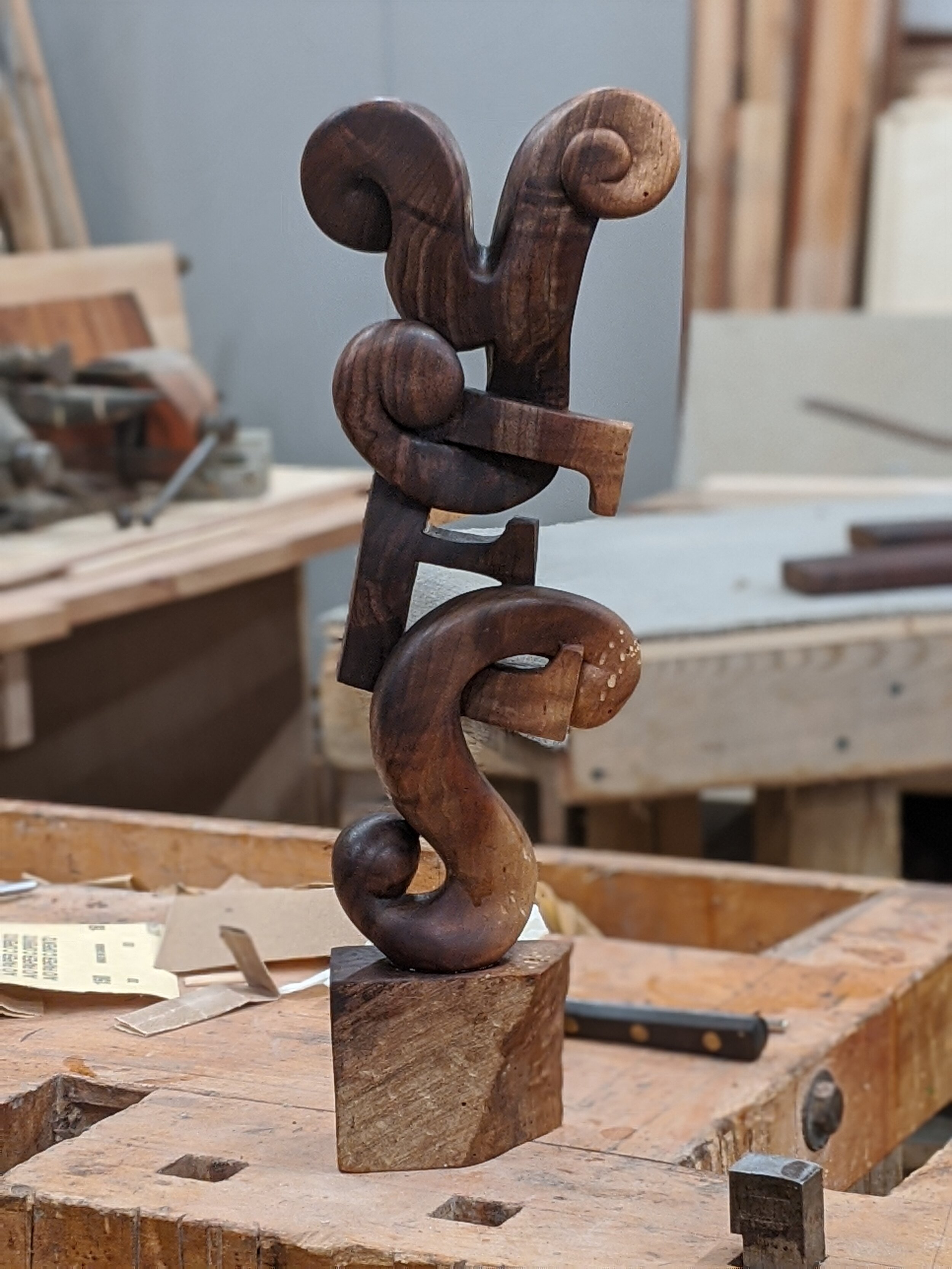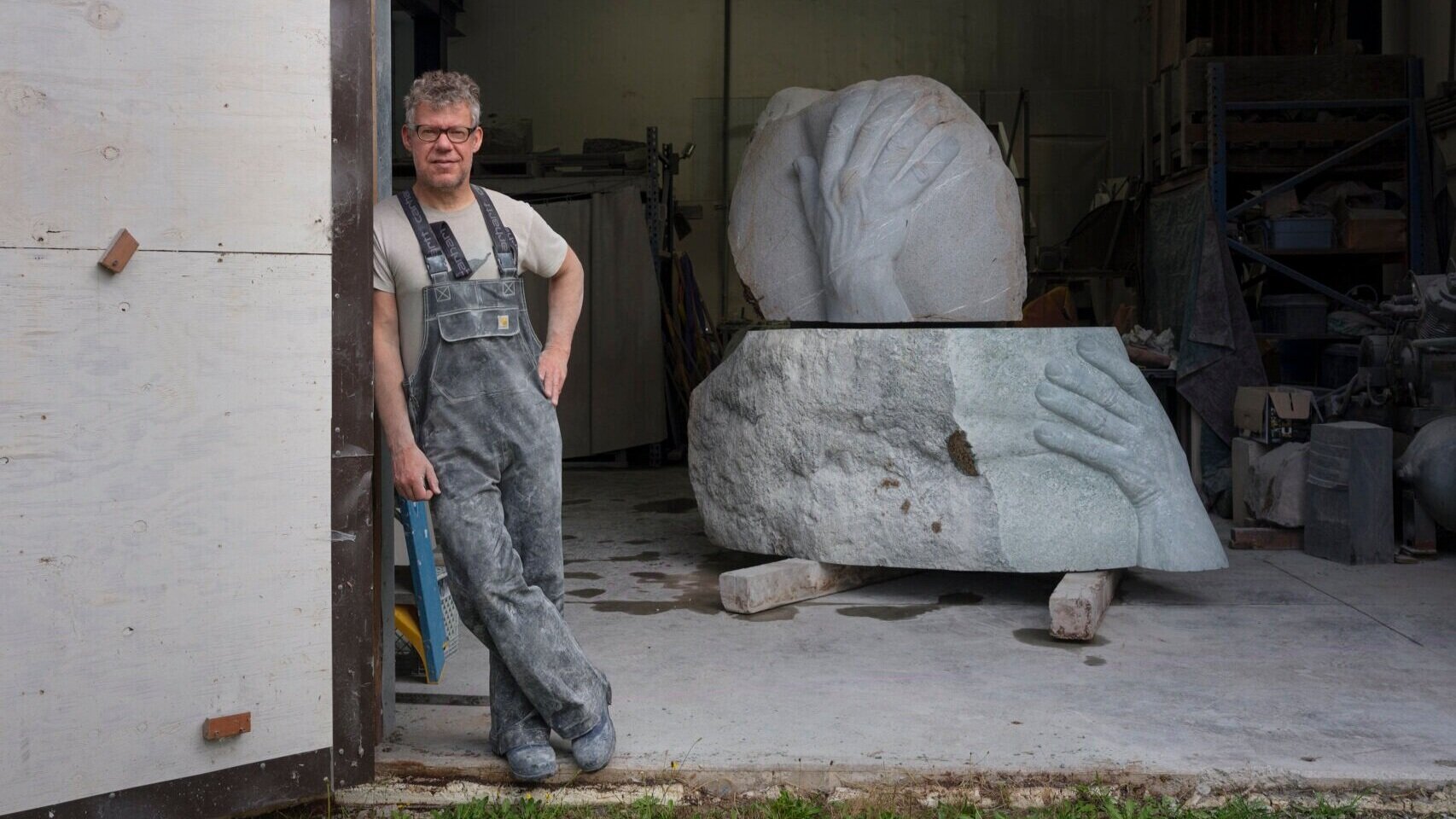Artist Interview: Dan Webb
A conversation between Dan Webb and Geoffrey Peckham on January 29, 2021:
Dan Webb: I thought of the biomorphic letters of the top and bottom and the more traditional Times New Roman becoming an anchor point holding it together. I just wondered if that was something I could do…
Geoffrey Peckham: You realized days into carving it, this influence.
DW: Right, here's how this goes: I see something and I think that's BS, that's crazy. And then two days later I'm making something that looks like it...
GP: Not intentionally, it just is happening?
DW: Right. I've had that happen a number of times where just as I'm getting to the point of closing the door, I realize I'm cracking it back open. That act of being dismissive is, now, information to go back and listen. Everybody teaches me something. Certainly, as a teacher, but as a fan of art, I find it all the time. I see something I don't like but think about it and realize that it actually fits into something I'm thinking about myself. That's their solution to it. And I could have a conversation with that. Again, it's that muscle. How do you keep going with your own impulse and keep challenging yourself, how do you get out of those ruts that you create in your mind and the habits that you inevitably sort of fall into?
GP: I think what you're talking about is the delight of the surprise in your own work. Talking with photographer friends of mine—when they’re in the darkroom printing a negative—going on about its incredible light: “Look at how the film did this!” They're just so tickled—it's a joy— it wasn't premeditated. There was an inkling when they took the photograph that there might be something transcendent there...
DW: There's that serendipity... actually, you're only sort of responsible. You're not responsible for all of it. There's way more to it than you could possibly know.
GP: Especially when you carve into a piece of wood and encounter the inside of it. That's what happened to this figure and it somehow works with whatever your hands are doing with the knife.
DW: So true. There is no question that the minute you carve into this, all your best-laid plans have to shift and change.
GP: Because of the wood, alone?
DW: Yes. So there's an accommodation, a compromise, a reassessing. That's the great part of using something like wood. Every piece of wood—I don't want to say it's unprecedented because there's something you recognize as qualities to a certain kind of wood—but they’re unique, each has a character to work around...
GP: In the beginning, there was a wedge of a block of wood that was precarious, standing on end. And then three days later I'm looking at this "Precarious Yes”—that’s what you called it.
DW: Again, the wood is way smarter than I am. The idea of the "Precarious Yes,” as soon as I said it to myself, or the wood said it to me, made me realize how familiar I am with that... I am familiar with the idea of the precarious yes.
GP: Metaphorically?
DW: I don't think it's a metaphor. I think this is a precarious yes. It's barely standing. It's negotiating with its component parts to stand up; though, the fact that it's doing, everything is morphed, twisted, and having to accommodate the reality of the relationship it has with its neighbor. There's that. But who hasn't said yes with complications? Who hasn't tried to be faithful to saying yes and then the realization of what you just did just kind of goes (sigh).
Featured Artist



